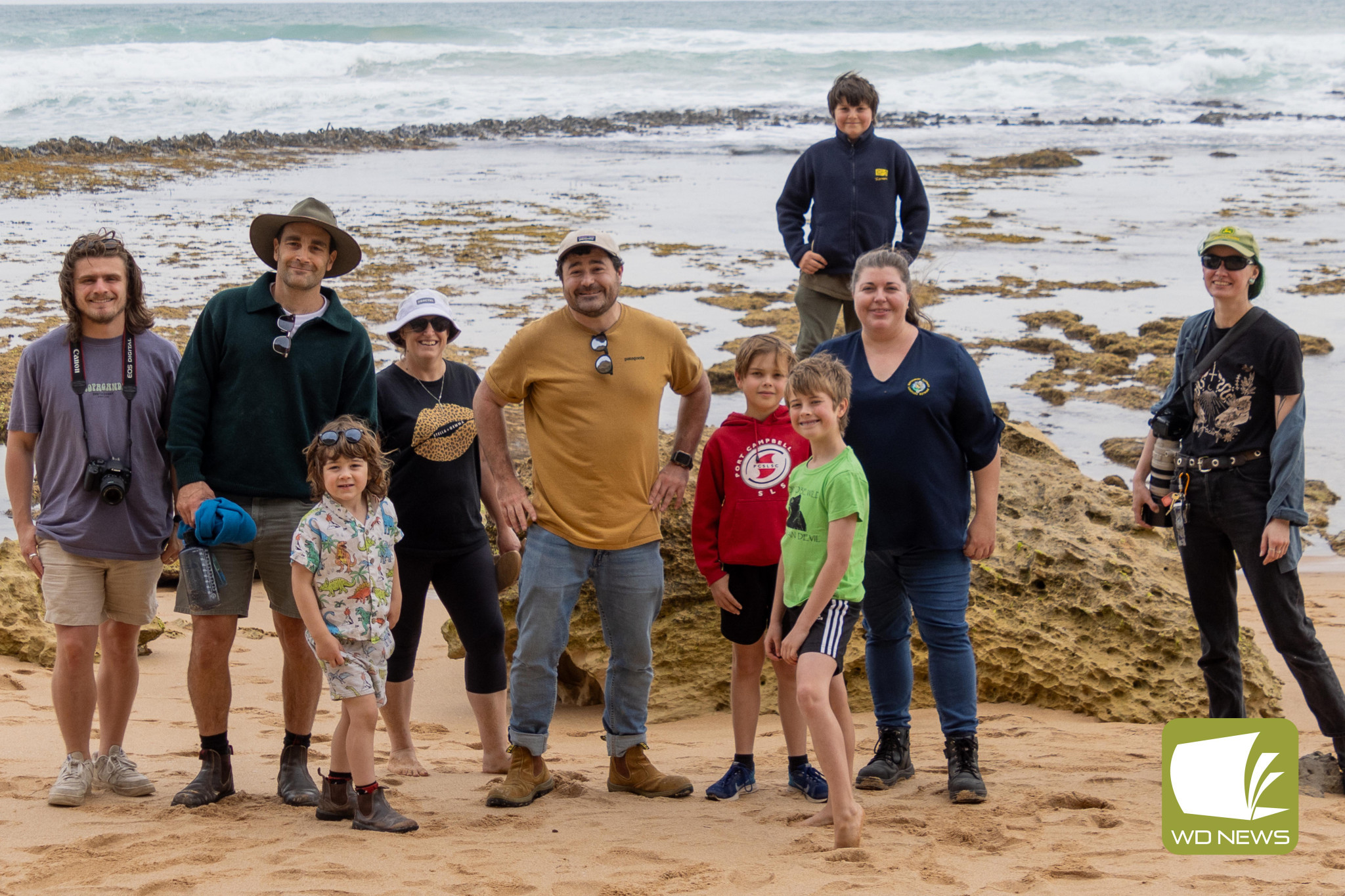General News
22 January, 2025
Budding palaeontologists gather for event
HAVE you ever wanted to know more about fossils?

Almost 100 people took part in a Heytesbury District Landcare Network (HDLN) organised fossil talk and showcase recently.
HDLN landcare coordinator Michelle Leech said 45 people also attended a fossil excursion at Gibson Steps afterwards with palaeontologist Ben Francischelli.
The showcase included an extensive collection of fossils Mr Francischelli and others have discovered along the Great Ocean Road and towards Melbourne, including an impressive collection of shark and megalodon teeth.
His talk touched on fossils from the Cretaceous period 107-110 million years ago to the mega-fauna of a couple of million years ago, pulling together a timeline dating back from dinosaurs to today.
But the real surprise came at the end of the day when Mr Francischelli found a fossil embedded in a rock near the 12 Apostles; a little penguin clavicle bone called a coracoid from an 11-million-year-old specimen.
Fossils of animals with backbones, known as vertebrates, are comparatively rare in the region, but Mr Francischelli said when they are found, they tend to be well preserved.
“They’re usually scientifically valuable as well, and that’s the case with this find,” he said.
“It’s indicative of a penguin that probably stood about a metre tall, significantly bigger than the little penguins we have today.
“The area immediately around the 12 Apostles is scientifically important and when you do find fossils, they are usually important.”
Mr Francischelli said the event was a “huge success”, prompting a lot of interesting questions.
He said palaeontology wasn’t a particularly well-funded science but there was huge interest in the community with people wanting to understand more about what’s happening in the landscape, including palaeontology.
“There are a lot of people interested in the work I’m doing and how what I’m finding is changing what we know of the prehistoric landscape,” Mr Francishelli said.
Based in Bayside (Melbourne), he is planning to spend more time in the western districts of Victoria to search for fossils.
However, while he encourages more interest in the field, he advises people to be careful when searching.
“National parks are protected lands and people need specific permits to remove any fossils,” Mr Francischelli said.
“Citizen science has contributed some of the most incredible discoveries over the past decade but it’s best to take a photo and send it to either myself (link to Mr Francischelli website: https://www.benfrancischelli.com/) or to the State Museum.”
Ms Leech said the event was the first in a series the network planned to host in the coming year to focus on local biodiversity.
“We’re aiming to hold more events devoted to developing a love of our local natural environment and getting people outdoors,” she said.
Read More: local